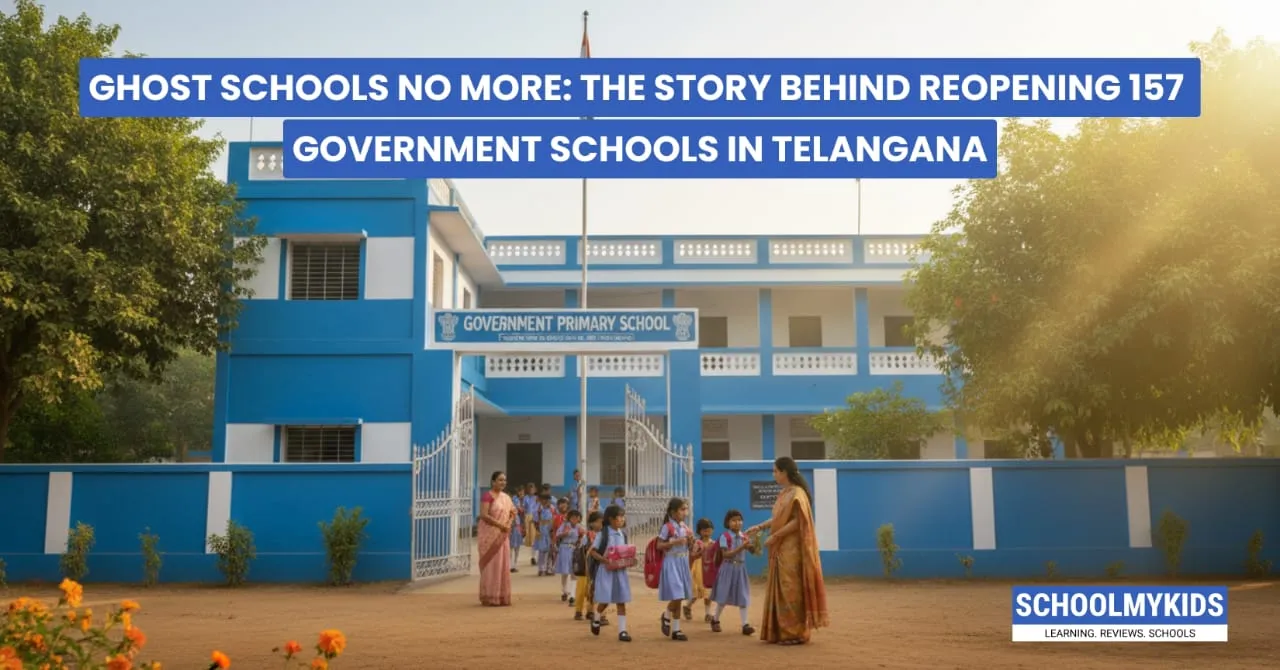Imagine a school building standing empty for years; no students, no laughter, no chatter. These are what many call “ghost schools.” In Telangana, this was a reality for 157 government schools that had zero student enrolments for years. But now, this academic year, all these schools have been brought back to life. This is not just a reopening; it’s a story of hope, education, and community revival.
If you follow education news in India, you know how challenging it is to keep schools open in rural and semi-urban areas. Telangana’s recent step to reopen these ghost schools shows a strong commitment to bringing education closer to every child. So, what’s the full story? Why did so many schools shut earlier? And why is reopening them such a big deal?
How Did We Get Here? The Rise of Ghost Schools
Data from Telangana’s school education department shows that nearly 1,960 government and local body schools had zero enrolments by the academic year 2024–25. That’s a sharp rise from 1,086 schools in 2021–22, increasing steadily every year. Ghost schools are mainly in rural regions, where factors like migration, lack of infrastructure, and availability of alternative schools also come into play.
The spike in empty schools is troubling. Schools far from children’s homes become impractical for daily travel. Families sometimes choose private schools or stop sending kids because the government facilities feel weak or poorly maintained. This creates a cycle where fewer students lead to less support and resources, ultimately resulting in school closures.
The Bold Move: Telangana’s Revival Plan
Understanding this challenge, Telangana took a strong step to reopen 157 such ghost schools in multiple districts. Ranga Reddy leads the way with 25 schools reopened, followed by Nagarkurnool (23), Khammam (15), and others like Mahabubabad, Hanumakonda, Jagitial, Suryapet, and Warangal.
Officials explain the decision wasn’t random but based on community demand and need. They renovated the schools, improved infrastructure such as classrooms, toilets, and clean drinking water, and added better teaching facilities. The goal? To bring schools closer to children’s homes and make education accessible, comfortable, and reliable again.
In Ranga Reddy district alone, officials said the 25 reopened schools enrolled around 450 students this year. The response far exceeded their expectations, with some schools running at full strength. Encouraged by this success, the district plans to reopen 40 more government schools next year.
Why Reopening Schools Matters
This reopening effort is more than just numbers. It means:
- Access to Education: Children in remote villages no longer have to travel long distances to reach schools. Education is right where they live.
- Community Upliftment: A functioning school builds hope. Parents feel empowered to send their children, and communities grow stronger with education.
- Reduced Dropouts: Close-by schools reduce the chances of children dropping out, especially girls, whose safety and convenience matter a lot.
- Quality Education: With upgrades in infrastructure and teaching quality, government schools become a real option for parents.
In India, government schools serve millions of children, especially those from economically weaker sections. Efforts like Telangana’s set an example that quality education can be delivered equitably and inclusively.
Challenges and the Road Ahead
Reopening schools is just one step. Telangana now faces the challenge to maintaining consistent enrolments and improving learning outcomes. Teachers need ongoing support and training, the curriculum must stay relevant, and schools should be safe, clean, and welcoming.
Also, some districts like Hyderabad reported no reopenings despite having ghost schools, mainly because of urban factors where students might prefer private or alternative schooling. This shows that solutions must be context-specific, combining infrastructure improvement with community engagement.
Conclusion
For educators, parents, and policymakers, reopening these schools is cause for celebration. It renews faith that education can reach every doorstep, every village, every child. Telangana’s initiative inspires hope for other states too. Education leaders across India can glean lessons from this experience, proving that with the right planning, dedication, infrastructure, and community support, even the toughest challenges of rural education can be tackled.









Be the first one to comment on this story.